Table of Contents
Note: The team split in two during Week 8. We held a meeting with our supervisor, coordinated all the research and progress we’ve made so far and decided on a new direction through a rapid design sprint.
Course Materials: Norming
A personal reflection on a valuable experience for ‘norming’. While thinking about while I was working on a website for a client
“For this week’s spark activity, you are encouraged to share your experiences of teamwork so far. This is not a chance to name and shame. The discussion should remain constructive at all times. The only reason to share is to help others learn from your experiences. This requires you to go beyond purely describing events. You must identify the key learning points and suggest ways to manage similar situations in the future. As an individual, consider a valuable experience in your team so far and write a short summary of your thoughts” (Falmouth University 2021)
The client wanted a clean, minimalist and modern website but one that would also stand out from the competition. I talked through options for photography of the office and team and how this will add something personal to the new website. The initial meeting went well, I talked through trending colours, modern layout and went away to create a new design. The next four designs I created did not go so well. Every time I went through the brief, clarified the design, created the design and sent the design to the client they declined the website. I was quite happy at this stage to move on, but to my surprise the client really wanted me to create a website for them. I called again, to try one last time to figure out what was going on.
The client explained that they had hired numerous website designers who had all decided they couldn’t meet the brief. I also discovered a business partner was also looking at the designs, who had their own ‘secret’ vision for how they wanted the website to look, which was in many ways completely different to the client’s vision I was speaking to. In the end, I convinced the client there were certain compromises and sold them a very basic design that looked very similar to their website designed 12 years ago. I had to compromise what I thought a design should look like, but the client has seen more traffic, more enquiries and is entirely thrilled with the new website.
A New Direction: Team Split
There are many good reasons for splitting a team, this should not necessarily be seen as a disaster, teams are transient, and I wish everyone the best but the project and my qualification are important to me. “Besides fulfillment and learning, liberating people from undesirable situations is another reason for reteaming. This requires being present and active with teams to notice behaviors like silence or work among team members that is not discussed at standard team meetings. It relates to reading the social and emotional field of teams” (Helfand 2016). Personal circumstances or “individual obstacles” (Lencioni 2005) for myself and other team members were a contributing factor. Many members of the team had not been present, contributing or communicating in some time and while there were extenuating circumstances for some members we are not aware of the whole team’s situation. Sometimes the combination of personalities, energies and goals just cannot align. “So what if it’s not there? What if you have a team together for a while and their output is mediocre and the energy is low? You might explore splitting up that team. Keeping a non-resonant combination of people together could lead to misery and stagnation” (Helfand 2016). I feel the only option to resolve the team morale at this stage is to start again. I do hope everyone can re-form, re-focus and accomplish their goals.
While I’m sure the new team formation will not be without bumps in the road, the new Team Rock-it have come together to form a new strategy, iterate on our ideas through a rapid design sprint and try to build towards the ‘norming’ stage. “Now that they know one another better, your team members will feel more comfortable asking for help and offering constructive feedback. They’ll share a stronger commitment to the team’s goals, and they should make good progress toward it” (Mindtools 2021). The new team are unified in our goal to build something together, learn about collaboration and teamwork and make progress towards this module and our future ambitions.
Norming
Lencioni’s Overcoming the Five Dysfunctions of a Team: A Field Guide for Leaders, Managers, and Facilitators (2005) covers a number of exercises and information on supporting a team to collaborate. Taking Lencioni’s first advice “DON’T DO EVERYTHING EXACTLY THE WAY IT IS DESCRIBED HERE!” (2005) I picked out exercises that were applicable to our team.
In my personal experience, finding the norming phase is about recognising patterns and Lencioni discusses identifying these obstacles that are blocking focus. “To help teams identify and remove extraneous obstacles that prevent them from focusing on the real issue that needs to be resolved” (Lencioni 2005). To find the root cause of the conflict, in this instance, a second client I knew nothing about and a hesitancy for change – you need to dig around and then harder still, you need to find a way to solve the conflict. Team Rock-it’s storming stage was epic, and part of the norming stage is every member of the steam stopping to think about what they want, why they are here, and whether they want to continue. I wanted to work together as a team, and every singly member of our team succeed and follow their own goals and dreams, but everyone’s version of success is different.
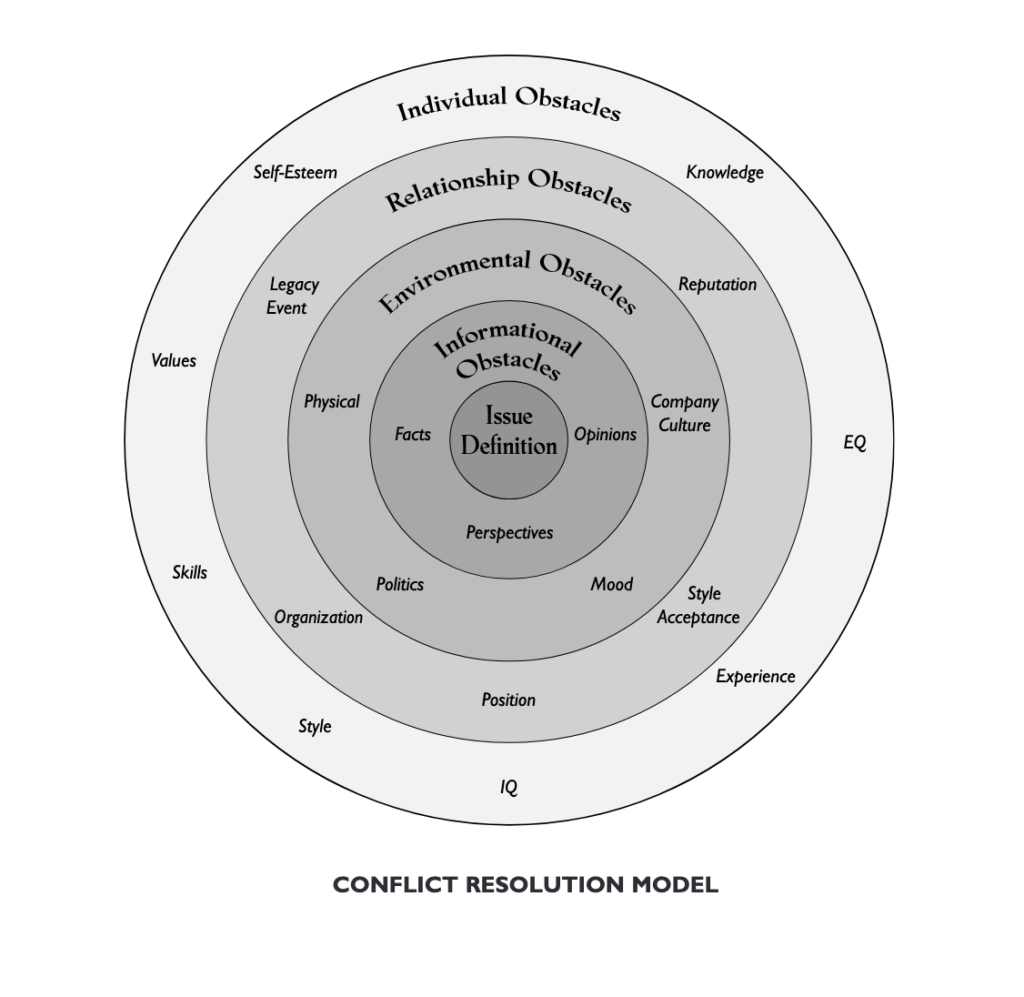
Figure 2 shows different obstacles that affect team conflict and resolution, the outer circles being harder to combat than the inner circles. “The key to using this model is to be aware of the possible existence of obstacles during discussions and to refer to it whenever a conversation gets bogged down” (Lencioni 2005). “That said an evolving team – like a child playing with a new toy – may need various rounds of experimentation to advance its learning before we it settle on the best course of action. This experimentation should be fostered through the forming and storming stages as it gives the teams confidence and experiences they may again want to revert to as they move into the performing stage” (Rowley and Lange 2007). Moving forward with our new team, we may find ourselves storming again and we can refer back to the conflict resolution model.
Building New Trust
The new team is building trust which is in my view essential to most relationships. “When it comes to teams, trust is all about vulnerability. Team members who trust one another learn to be comfortable being open, even exposed, to one another around their failures, weaknesses, even fears. Now, if this is beginning to sound like some get-naked, touchy-feely theory, rest assured that it is nothing of the sort. “Vulnerability-based trust is predicated on the simple—and practical—idea that people who aren’t afraid to admit the truth about themselves are not going to engage in the kind of political behavior that wastes everyone’s time and energy, and more important, makes the accomplishment of results an unlikely scenario” (Lencioni 2005). Moving forwards it’s important we open up about what we want to do with the project, what we can do and what are our aspirations. According to Leonici (2005) if any one member can be open and vulnerable it has a profound impact on the whole team. “And that is a testament to the power of vulnerability, and the need for unanimity. Everyone on a team has to participate. That doesn’t mean that everyone will do it the same way. But if even one member of a team is unwilling to be open about weaknesses, mistakes, and issues, it will have a profound impact on everyone else” (Lencioni 2005). I will try to be open and honest, without being emotional, so the team feels like we are in a safe space. Simple acts like sharing our progress on Trello, contributing to Miro and saying thank you can start to build trust.
A New Team Charter
People & Roles
- Joanne – UX/UI, Research & Branding
- Sarah – Art Direction, Prototype development & 2D Animation
- Kim – Supervisor & Academic Support
Team Values
Accessibility
Trust
Inclusivity
Team Work
Growth
Sustainability
To solidify the new team goals, the team iterated on the previous team charter. The new team iterated on our original The Team Charter. This is the final version:
Fig 3. Team Rock-it! 2021. Team Charter #2
Distributed Scrum
Distributed team with overlap – The team are all available in the afternoon and evenings, during the working week.
Sharing information and distributed Scrum – I work remotely with clients over zoom, email and the telephone – often being given a vague description of the services they require. For example “I want a modern website” or “natural photos” and I’ve formulated strategies to communicate the details I require from someone to fulfil their brief. Usually, I will go back with a design and a list of specific questions. I took for granted that many members of our team are used to working in the office, and possible haven’t utilised remote working practices in the same way.
Communication Guide
Sharing progress, planning and information:
- Trello
- Slack
- Miro
Design Style Guides
- Branding & Style Guides
- Art Direction Document
New Art Direction Document
Fig 4. Team Rock-it! 2021. Art DIrection Document #2
Milestone Planning
A roadmap or milestone planning is usually included in Game Design documentation or the one-page design document, so I already had a board set up from Sprint 3 (only one team member participated). I chose to focus on milestone planning because of the short period of time left at this stage of the project. “Storming can make or break a team, so it’s essential that you establish processes to track the progress and success of tasks” (Mindtools 2021). Moving from our storming stage to norming, a strong planning structure and open environment will be essential for moving forward. The new team collaborated on the tasks they could complete each week and moved our sprints to Thursday to Thursday to fit with the assignment dates.
Fig 5. Team Rock-it! 2021. Milestones
Sprint 5 ‘A rapid design sprint’
Sprint Goal: Iterate on the project to align with our new direction.
| Collaborative Individual Tasks |
| New Art Direction – Focus on research for sustainable/friendly/community inspired architecture |
| A Visual Moodboard for New Art Direction |
| How Might We? |
| Research – Sustainability in Technology |
| Synchronous/Asynchronous Team Tasks |
| Feature Ideation – 6 Thinking Cats |
| Brainstorming: A new name |
| A Rapid Design Sprint – Problem Statement, HMW and Ideation |
| Milestone Planning |
| Team Charter |
| Organise and commit to Sprint Retro |
A Rapid Design Sprint
Week 8 saw Team Rock-it move on as a team of two and we needed a new direction, clear goals, expectations and planning. The team held a rapid design sprint with our supervisor, to collate our research and ideas, re-align our goals and iterate on our work to date. “The forming stage is characterized as a period of orientation. As the team forms, boundaries surrounding scope, processes and roles will be unclear, team members will be cautious although excited and optimistic about the new opportunity ahead. The new team will be highly dependent on the team leader or coach to provide direction. Members will test the tolerance of leaders and processes, new practices may often be ignored and there will be a hankering for pre-existing standards” (Rowley and Lange 2007). The new team is open, communicative and we are beginning to open up about weaknesses and mistakes.
Problem Statement
The team collaborated together to discuss our current ideas and then formulate our own problem statements, we then shared and picked the statement that best fit with our research and goals.
Problem Statement: Millennials need a way to find sustainable communities so that they can express themselves and uphold their values in a social space safely and conveniently.
How Might We?
UX Team Research
How Might We: Help millennials find a sustainable community?
How Might We: Create a virtual social space that is safe?
Indie Game Development Research
How Might We: Create a platform that enables a sustainable community to grow?
How Might We: Deliver a product that positively contributes towards a sustainability goal?
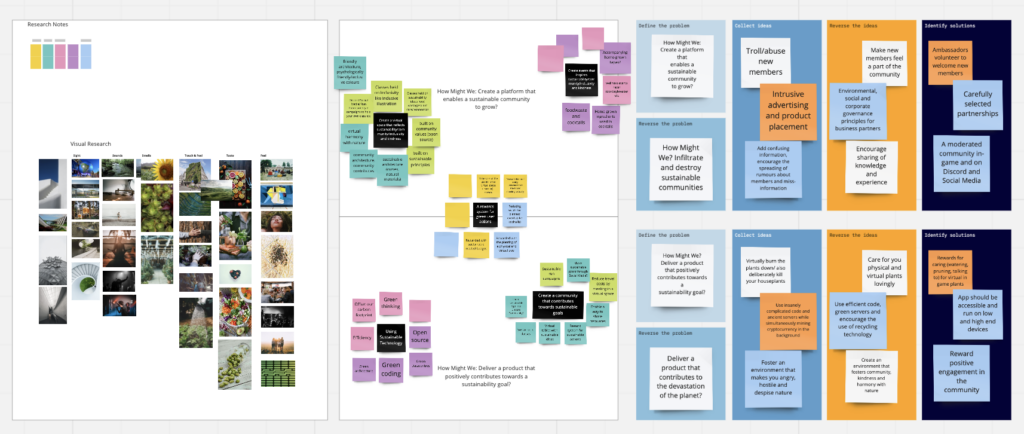
Fig 6. Masters 2021. HMW Brainstorm
How Might We: Create a platform that enables a sustainable community to grow?
- Create a 3D Space that reflects sustainable architecture
- Create a 3D Space that reflects community architecture
- Create a rewards system for sustainable actions
- Create a rewards system for community actions
Reverse Brainstorm – How Might We: Create a platform that enables a sustainable community to grow?
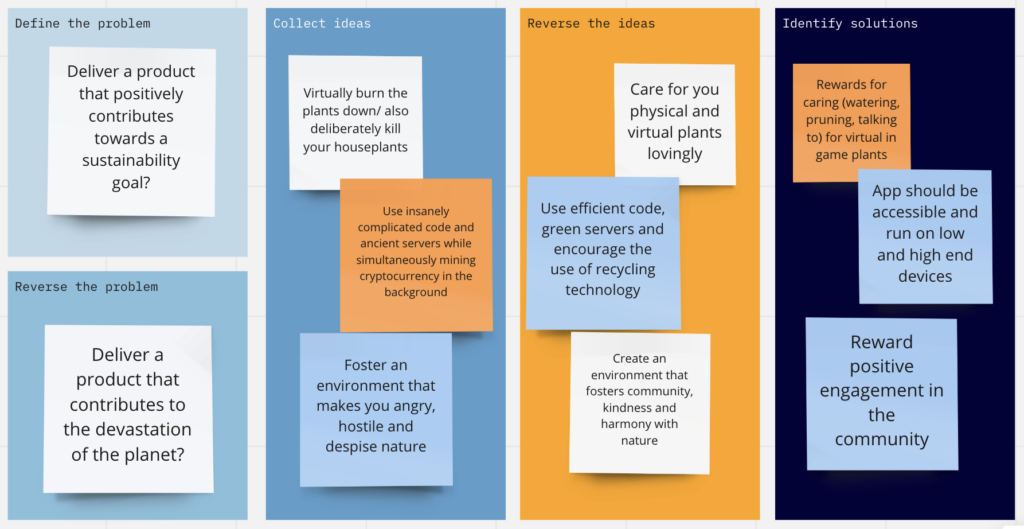
How Might We: Deliver a product that positively contributes towards a sustainability goal?
- Using Sustainable Technology
- Create a community that contributes towards sustainable goals
- A rewards system for green user actions
Reverse Brainstorm – How Might We: Deliver a product that positively contributes towards a sustainability goal?

Research – Sustainability in Technology
“No matter where you look, concern is growing about how technology is affecting issues such as jobs, wages, inequality, health, resource efficiency and security. These changes are altering the world so drastically that all companies need to undergo a transformation to avoid going extinct” (Klein 2020).
“And just like a business cannot digitally transform unless – or until – its people transform, I believe that, while they come with their own environmental costs, technology and digitalization can play a crucial role in developing solutions for a better tomorrow” (Klein 2020).
“Technology and digitalization will help them achieve this with intelligent and highly agile digital supply chains that predict and respond to changes in the ecosystem to quickly capitalize on new opportunities and break down old barriers” (Klein 2020).
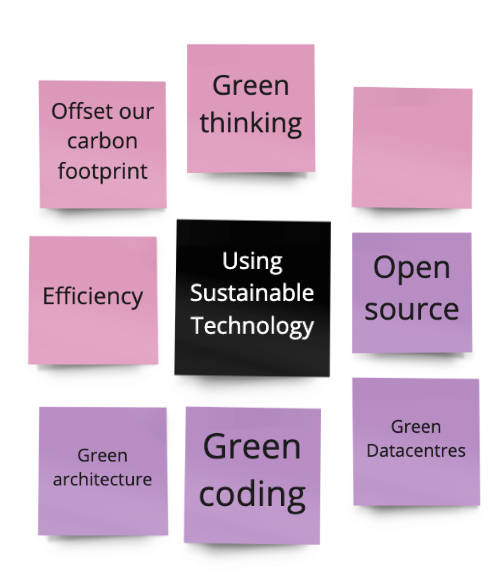
A Visual Moodboard for New Art Direction
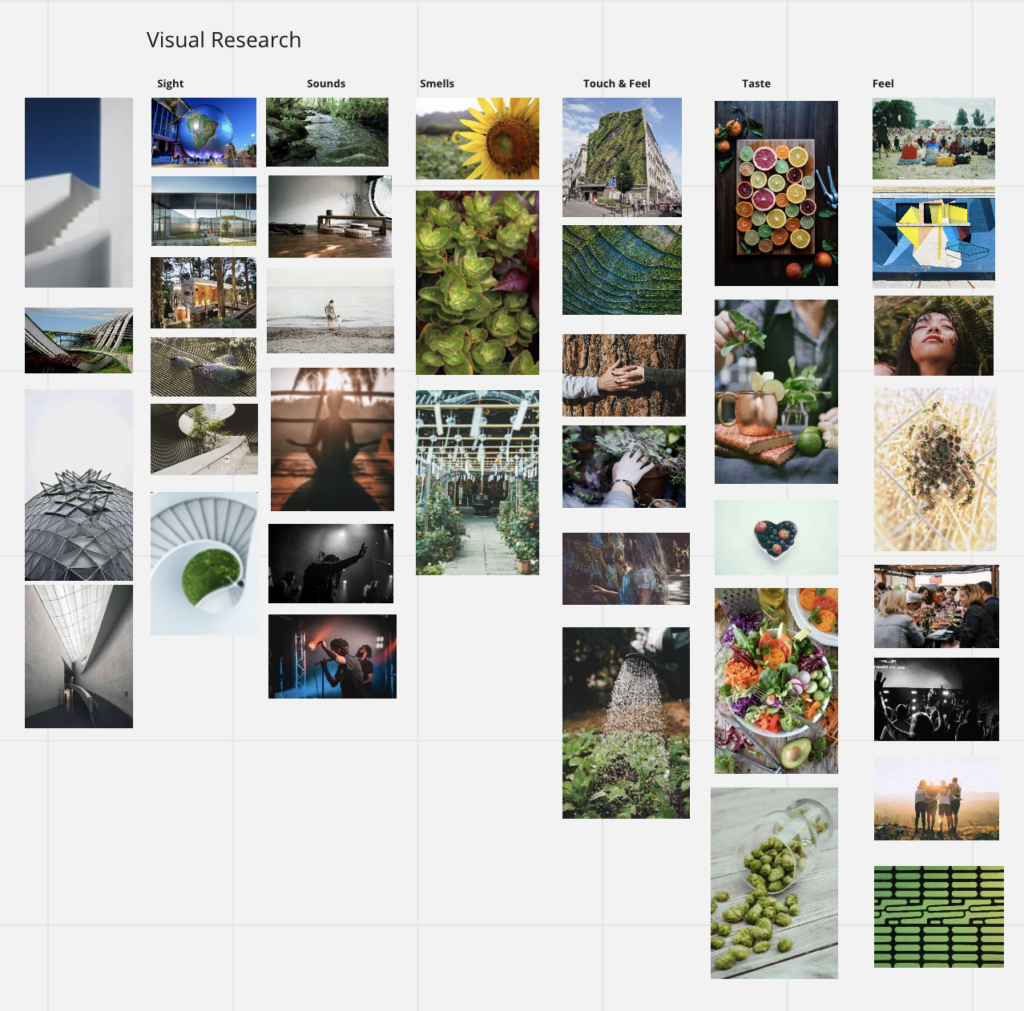
“Today, thanks to psychological studies, we have a much better idea of the kind of urban environments that people like or find stimulating” (Bond 2021).
“Sustainable design requires more than a check-box approach in ensuring the design meets necessary benchmarks,” Curtis Fentress, founder and principal in charge of design at Fentress Architects, said in a previous gb&d article. “To create inherently sustainable designs that encourage people to think more deeply about the environment, architects must form a bond between individuals, the community, and the building” (Stevens 2021).
“The Toronto Springdale Library’s eco-friendly and eye-catching design reflects a new age in public spaces. Rather than holding shelves full of dusty books, libraries are being reimagined as friendly gathering spaces meant for the 21st century” (Stevens 2021).
New Art Direction – Focus on research for sustainable/friendly/community inspired architecture
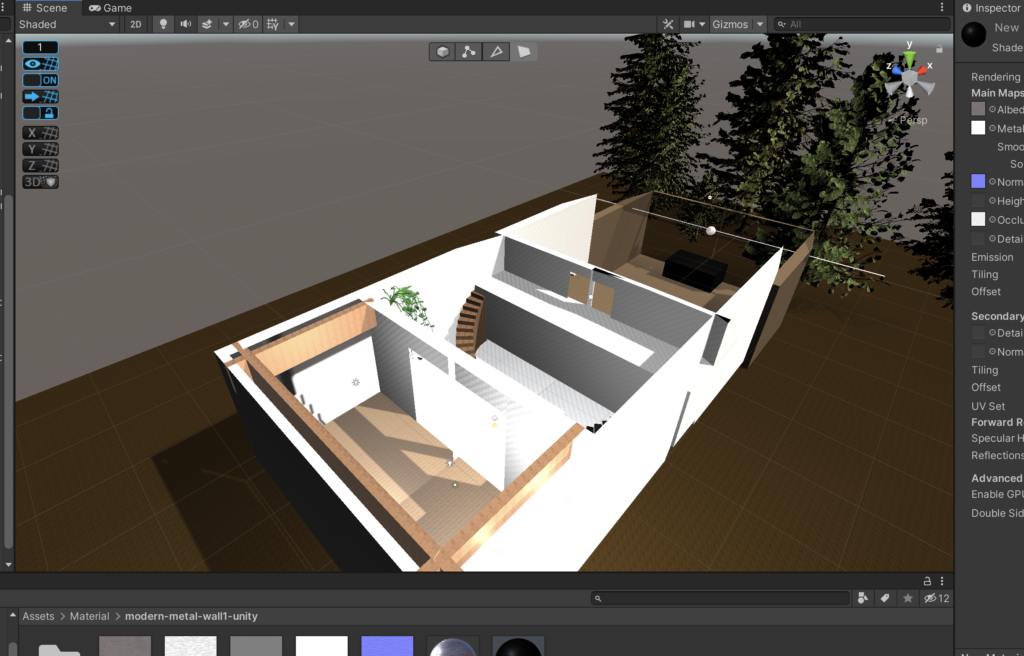
Fig 10. Prototype [screenshot by author]
Feature Ideation 6 Thinking Cats
Fig 12. Team Rock-it! 2021. 6 Thinking Cats
Sprint 5 Retro
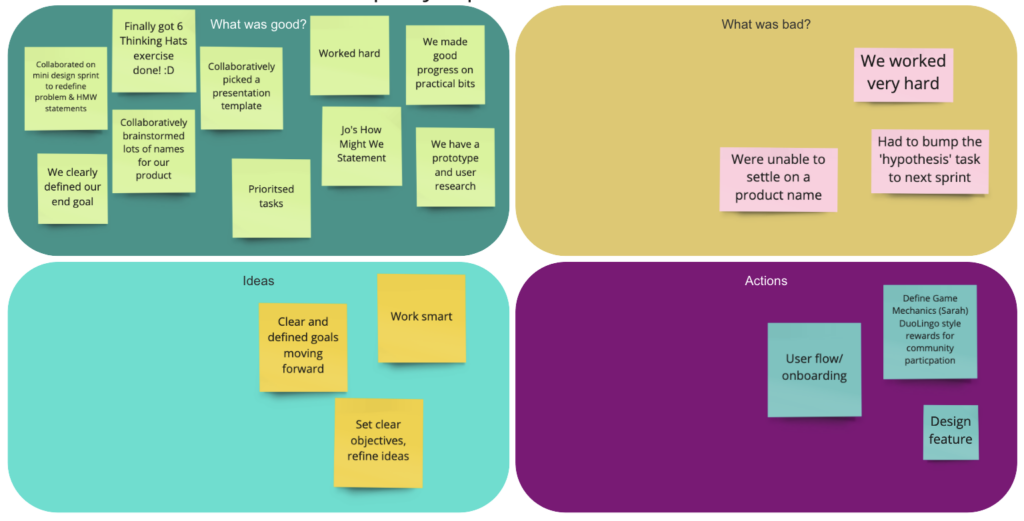
Reflection
At the beginning of Sprint 5 and the split of the team, I felt both optimistic but fatigued. Sprint 5 saw many changes and yet for the sake of the team and our project we have to keep up the momentum. “Change fatigue is very real, but sometimes dealing with overwhelming change is unavoidable. Even then, it’s faster to go slow” (Ziegenfuss 2019). To my surprise, I find myself reflecting on areas where we have done well. The new team successfully re-iterated on the idea, we did not give up or stop working, we continued to collaborate, we encouraged one another and we have made an incredible amount of progress considering the events of the last few weeks.
List of Figures
Figure 1. Patrick LENCIONI. 2005. Obstacles [chart], From: P Lencioni. 2005 Overcoming the Five Dysfunctions of a Team: A Field Guide for Leaders, Managers, and Facilitators. Pfeiffer: Wiley.
Figure 2. Team Rock-it!. 2021. Team Charter #2.
Figure 3. Sarah MASTERS. 2021. Art Direction Document #2.
Figure 4. Team Rock-it!. 2021. Milestones.
Figure 5. Sarah MASTERS. 2021. HWM Reverse Brainstorm.
Figure 6. Sarah MASTERS. 2021. HWM Reverse Brainstorm.
Figure 7. Sarah MASTERS. 2021. Sustainability in Technology.
Figure 8. Sarah MASTERS. 2021. Moodboard, Sight, Sounds, Smells, Touch, Taste & ‘Feel’.
Figure 9. Unity Project [screenshot by author].
Figure 10. Team Rock-it!. 2021. 6 Thinking Cats.
Figure 11. New App Name Brainstorm [screenshot by author].
Figure 12. Retro [screenshot by author].
References
AARON, J. R., MCDOWELL, W. C. and HERDMAN, A. O. 2014. The effects of a team charter on student team behaviors. Journal of Education for Business, 89(2), pp.90-97
BOND, Michael. 2021. ‘The Hidden Ways That Architecture Affects How You Feel’. [online]. Available at: https://www.bbc.com/future/article/20170605-the-psychology-behind-your-citys-design [accessed 21 Jul 2021].
CAMPBELL, Maeve. 2021. ‘5 Stunning Examples of Green Architecture around the World’. euronews [online]. Available at: https://www.euronews.com/green/2021/05/12/5-magnificent-examples-of-green-architecture-around-the-world [accessed 21 Jul 2021].
Falmouth University. 2021. GDD730 Co-Creative Design & Development Practice. Available at: https://flex.falmouth.ac.uk/courses/913 [accessed on 20 June 2021]
FENTRESS, Curtis. 2020. ‘Fentress Architects on How to Design for People and the Environment – Gb&d’. gb&d magazine [online]. Available at: https://gbdmagazine.com/fentress-architects-2/ [accessed 21 Jul 2021].
HELFAND, Heidi. 2016. ‘Dynamic Reteaming: How We Thrive by Rebuilding Teams’. 2016. Agile Alliance | [online]. Available at: https://www.agilealliance.org/resources/experience-reports/dynamic-reteaming-how-we-thrive-by-rebuilding-teams/ [accessed 26 Jul 2021].
KEPKA, Alex. n.d. ‘A Complete Guide to Getting Startup Funding in the UK in 2021’. https://fundsquire.co.uk/ [online]. Available at: https://fundsquire.co.uk/guide-startup-scaleup-funding-uk/ [accessed 13 Aug 2021].
KLEIN Christian. 2020. ‘Here’s How Digital Transformation Will Create a More Sustainable World’. 2021. World Economic Forum [online]. Available at: https://www.weforum.org/agenda/2020/01/digital-transformation-sustainable-world/ [accessed 26 Jul 2021].
LENCIONI, Patrick. 2005. Overcoming the Five Dysfunctions of a Team: A Field Guide for Leaders, Managers, and Facilitators. Pfeiffer: Wiley.
LUKIĆ, J. M. and VRAČAR, M. M. 2018. Building and nurturing trust among members in virtual project teams. Strategic Management-International Journal of Strategic Management and Decision Support Systems in Strategic Management, 23(3).
MARCUS, Clare Cooper. 2000. ‘SITE PLANNING, BUILDING DESIGN AND A SENSE OF COMMUNITY: AN ANALYSIS OF SIX COHOUSING SCHEMES IN DENMARK, SWEDEN, AND THE NETHERLANDS’. Journal of Architectural and Planning Research 17(2), 146–63.
MCDOWELL, W., HERDMAN, A. and AARON, J. 2011. Charting the course: the effects of team charters on emergent behavioral norms’. Organization Development Journal, 29(1), p.79
MINDTOOLS. 2021. ‘Forming, Storming, Norming, and Performing: Tuckman’s Model for Nurturing a Team to High Performance’. [online]. Available at: http://www.mindtools.com/pages/article/newLDR_86.htm [accessed 26 Jul 2021].
ROWLEY, Darren and Manfred LANGE. 2007. Forming to Performing: The Evolution of an Agile Team. Agile 2007 P.408-414.
STEVENS, Samantha. 2021. ‘11 Examples of Community Architecture at Its Best’. gb&d magazine [online]. Available at: https://gbdmagazine.com/examples-of-community-architecture/ [accessed 21 Jul 2021].
ZIENGENFUSS, Sarah. 2019. ‘The Trials And Tribulations of Finding The Right Agile Framework’. 2019. Agile Alliance | [online]. Available at: https://www.agilealliance.org/resources/experience-reports/the-trials-and-tribulations-of-finding-the-right-agile-framework/ [accessed 26 Jul 2021].